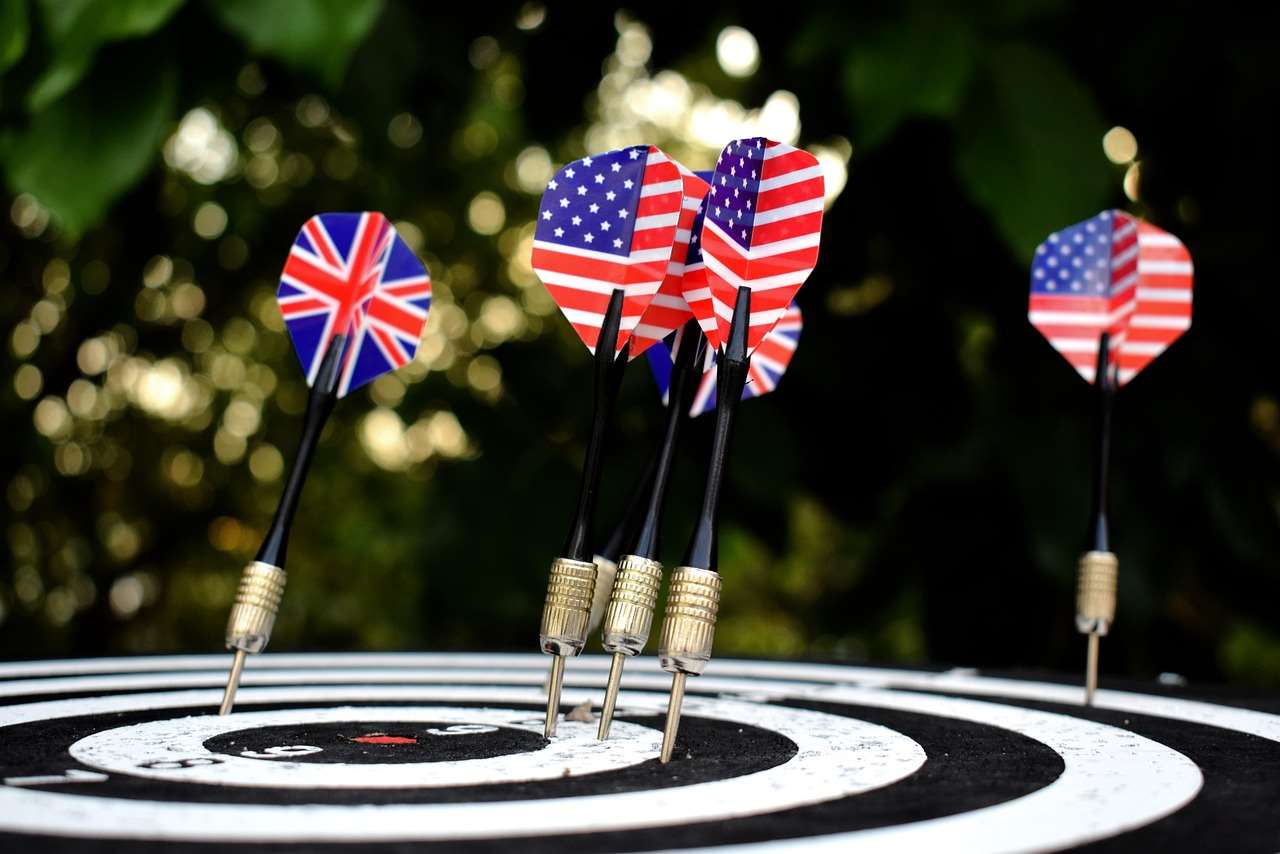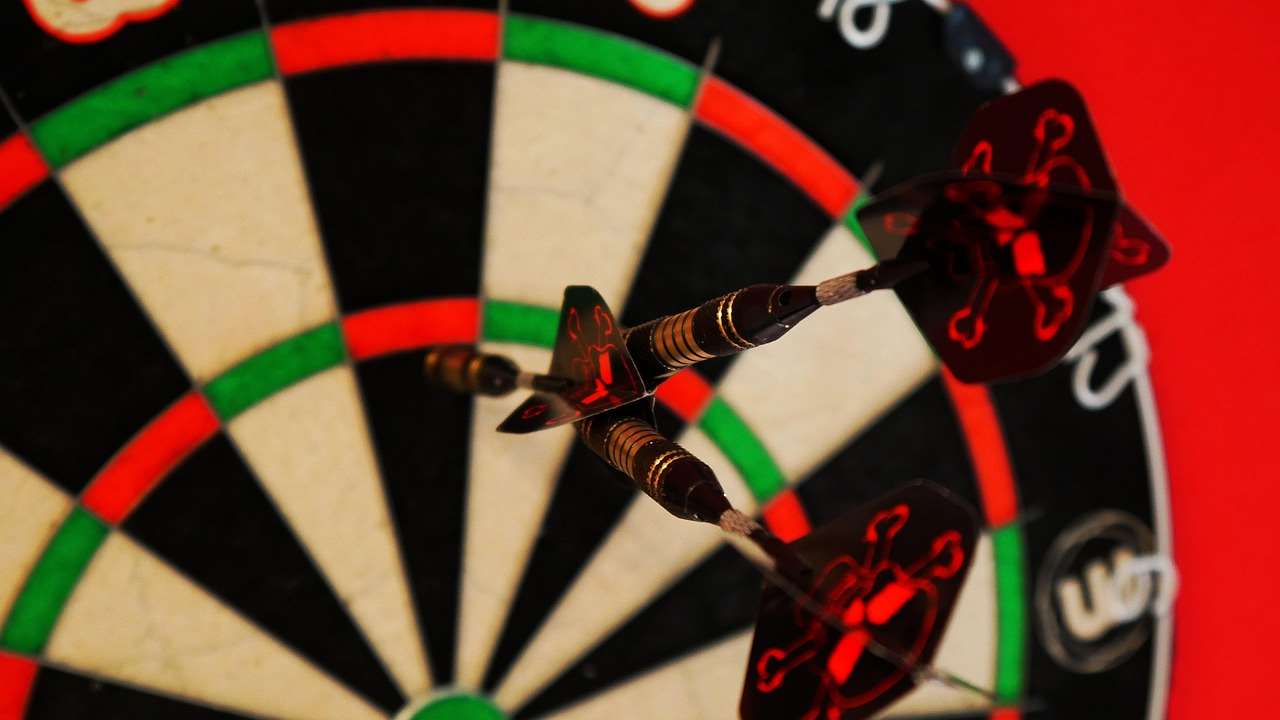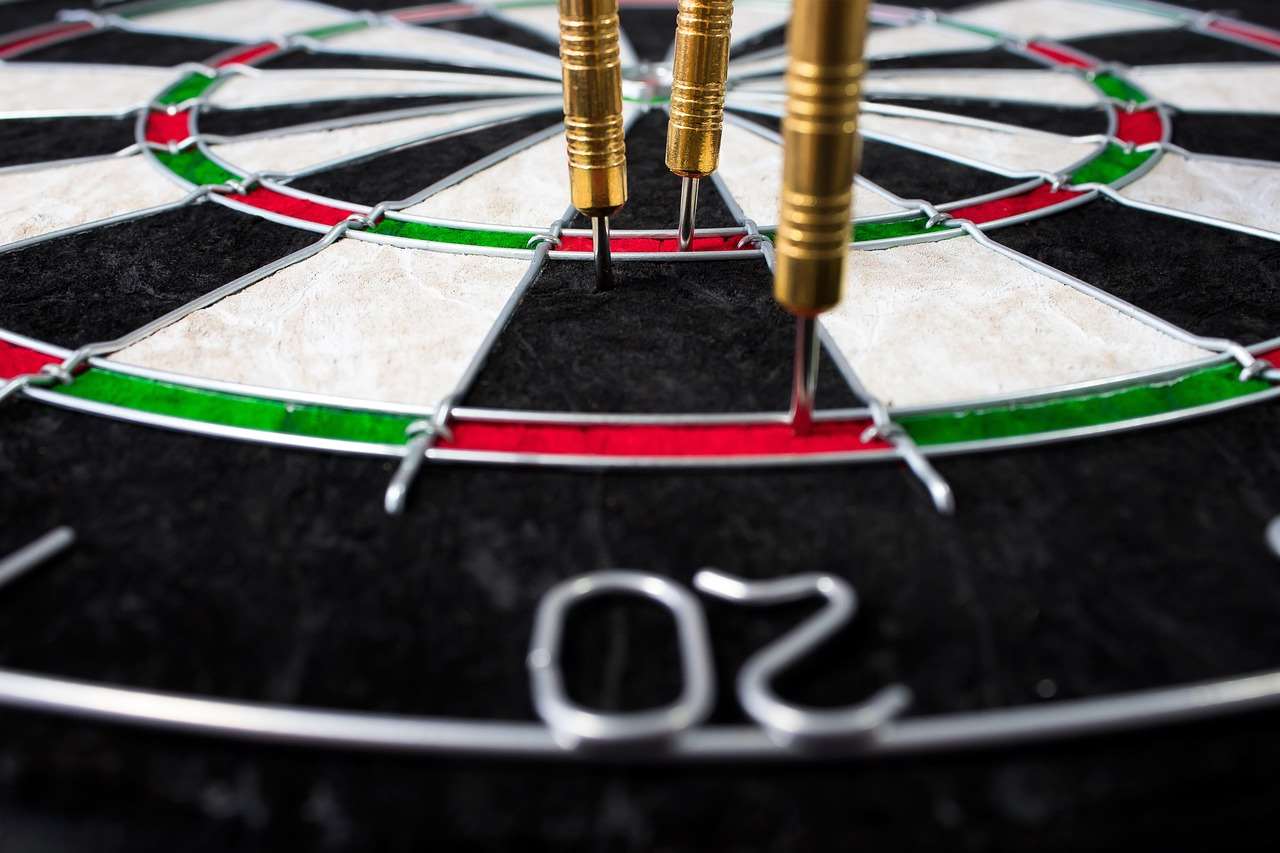Achieving a good darts stance is fundamental to consistent and accurate throws; it’s the bedrock of your technique. This article will guide you through creating a stable and balanced stance, covering everything from foot placement to weight distribution and variations that can be tailored to your individual style.
⚠️ Still Using Pen & Paper (or a Chalkboard)?! ⚠️
Step into the future! The Dart Counter App handles all the scoring, suggests checkouts, and tracks your stats automatically. It's easier than you think!
Try the Smart Dart Counter App FREE!Ready for an upgrade? Click above!
The Foundation: Understanding the Importance of a Good Darts Stance
Your darts stance is your launchpad. It dictates your stability, balance, and ultimately, your ability to repeat a consistent throwing motion. A flawed stance can lead to inconsistencies, forcing you to compensate with other parts of your body, hindering your throwing technique, and reducing your overall accuracy. Mastering a good darts stance is therefore the first critical step toward becoming a better darts player. It’s not just about standing; it’s about creating a solid, repeatable platform for your arm to deliver the dart.
Consider it like building a house: a weak foundation will cause problems down the line. Similarly, a poor stance in darts will inevitably lead to inconsistent throws and frustration. Investing time in perfecting your stance will pay dividends in the long run.

Finding Your Perfect Stance: Key Elements
While there’s no single “perfect” stance that works for everyone, certain principles are universal. Experimentation is key, but understanding these core elements will guide you toward finding what works best for your body type and throwing style.
Foot Placement
This is where it all begins. The most common stance is the sideways stance, where you stand perpendicular to the oche (the throwing line). However, variations exist, including a more forward-facing stance. Consider these points:
- Sideways Stance: Position your throwing-side foot (right foot for right-handed players, left foot for left-handed players) close to the oche, pointing directly at the board. Your other foot should be positioned slightly behind and to the side, providing balance and stability.
- Forward Stance: Both feet are positioned more towards the board. Some players prefer this for a more direct line of sight and throw. Be aware that this stance can be less stable.
- Weight Distribution: Aim to distribute your weight primarily on your front foot (the one closest to the oche). This helps maintain a stable base and prevents swaying during your throw. A good starting point is approximately 60/40 weight distribution in favor of the front foot.
Body Angle and Alignment
Your body angle plays a crucial role in aiming and consistency. Experiment with different angles to find what feels most comfortable and allows you to consistently hit your target. The key is to ensure your throwing shoulder is aligned with the target.
- Shoulder Alignment: Ensure your throwing shoulder is pointing directly at the target. This minimizes the need to compensate with your arm during the throw.
- Body Posture: Maintain an upright posture, avoiding slouching or leaning too far forward. A good posture promotes better balance and control.
The Importance of Balance
Balance is paramount in a good darts stance. A well-balanced stance allows you to maintain stability throughout your throwing motion, preventing unnecessary movement that can disrupt your aim. Imagine a tightrope walker; their balance is crucial. Similarly, your balance is the foundation of your throw. Pay attention to dart shaft length for beginners.

Common Stance Variations and Adjustments
While the core principles remain the same, many professional players have developed unique stance variations to suit their individual styles. Understanding these variations can help you fine-tune your own stance.
Leaning Forward
Some players lean forward slightly, bringing their eye closer to the target. This can improve focus and aiming but can also compromise balance if taken to the extreme. If you choose to lean, ensure you maintain a solid base and avoid overextending.
The Shuffle
A slight shuffle or adjustment of the feet before each throw is common among some players. This can help them find their balance and re-establish their alignment with the target. However, excessive shuffling can be a sign of insecurity or a lack of confidence in their stance.
Toe on the Oche
Placing your toe right on the oche is common, although some players prefer to stand slightly behind it. Ensure you don’t cross the line, as this is a foul. Find what distance gives you the most comfortable and stable base.
Practicing Your Good Darts Stance: Drills and Exercises
Developing a good darts stance requires consistent practice and attention to detail. These drills can help you refine your technique and solidify your stance:
- Mirror Practice: Practice your stance in front of a mirror, paying close attention to your foot placement, body angle, and posture. This allows you to visually assess your alignment and identify any areas for improvement.
- Balance Drills: Practice standing in your stance for extended periods, focusing on maintaining your balance and stability. You can also try closing your eyes to further challenge your balance.
- Video Analysis: Record yourself throwing darts and analyze your stance. This can reveal subtle flaws that you might not notice otherwise. Pay attention to your foot placement, body angle, and any unnecessary movement during your throw.
Remember to be patient and persistent. It takes time and effort to develop a good darts stance that feels natural and comfortable. Don’t be afraid to experiment and make adjustments along the way.

Troubleshooting Common Stance Issues
Even with diligent practice, you may encounter challenges with your stance. Here are some common issues and how to address them:
- Swaying: If you find yourself swaying during your throw, focus on shifting your weight slightly forward and engaging your core muscles. Ensure your weight distribution is predominantly on your front foot.
- Leaning Too Far: Overextending forward can compromise your balance and accuracy. Consciously try to maintain an upright posture and avoid reaching for the board.
- Inconsistent Foot Placement: Mark your foot position on the floor to ensure you’re placing your feet in the same spot each time. This will help promote consistency in your stance.
- Shoulder Alignment Issues: Use a mirror or have someone observe your stance to ensure your throwing shoulder is aligned with the target. Adjust your body angle as needed.
Addressing these issues proactively will help you maintain a stable and balanced stance, leading to more consistent and accurate throws. Consider what what time does darts match start.
The Mental Aspect of Your Darts Stance
While the physical aspects of a good darts stance are crucial, the mental component is equally important. Your stance should be a source of confidence and stability, allowing you to focus on your target without distractions. Develop a pre-throw routine that includes consciously checking your stance, ensuring you are balanced and aligned. This routine can help you get into the right mental state before each throw. Remember to breathe deeply and relax before you begin your throwing motion. Tension can negatively impact your balance and coordination. Visualize your target and feel confident in your ability to hit it. A positive mental attitude can significantly enhance your performance. Remember, achieving a good darts stance and maintaining it relies on your confidence.

Beyond the Basics: Advanced Stance Considerations
Once you’ve mastered the fundamental principles of a good darts stance, you can explore more advanced considerations to further refine your technique:
- Using a Stabilizing Arm: Some players extend their non-throwing arm out to the side for added balance. This can be particularly helpful if you tend to sway or lose your balance during your throw.
- Micro-Adjustments: Pay attention to how your body naturally adjusts during your throw. You may find that you unconsciously make slight movements to compensate for imbalances. Consciously refine these movements to improve your consistency.
- Adapting to Different Board Heights: While dartboard height is standardized, slight variations can occur. Be prepared to make minor adjustments to your stance to compensate for these variations.
These advanced considerations can help you fine-tune your stance to achieve peak performance. Always prioritize a stable and balanced base.
The Importance of Consistency and Repetition
No matter how “perfect” your stance may seem, it’s only effective if you can repeat it consistently. Focus on developing muscle memory by practicing your stance and throwing motion repeatedly. The more you practice, the more natural and automatic your stance will become. This consistency is key to achieving long-term improvement in your darts game. Be patient and persistent in your practice, and you’ll gradually develop a good darts stance that supports your success. Practice with a target darts kamera.

Good Darts Stance: A Summary
Developing a good darts stance is a crucial element of improving your darts game. By focusing on foot placement, body angle, balance, and consistency, you can create a stable and repeatable platform for your throw. Remember to experiment with different variations to find what works best for your body type and throwing style. Practice diligently and pay attention to detail, and you’ll gradually develop a stance that supports your success on the dartboard. A solid stance leads to a solid throw, and a solid throw leads to hitting your target with greater accuracy. Remember that consistent practice and mindful adjustments are the keys to unlocking your full potential at the oche. For all your electronic scoring needs, visit Electronic dart score counter.
Conclusion: Take Action and Improve Your Game
Investing time and effort into perfecting your good darts stance will undoubtedly improve your consistency and accuracy on the dartboard. Experiment with the advice outlined above, find what works best for you, and practice regularly. Take control of your game today! Find a stance that gives you confidence, balance, and repeatability, and watch your scores soar. Now, grab your darts and start practicing! You will thank yourself when you have finally found a stance that suits your personal needs.
Hi, I’m Dieter, and I created Dartcounter (Dartcounterapp.com). My motivation wasn’t being a darts expert – quite the opposite! When I first started playing, I loved the game but found keeping accurate scores and tracking stats difficult and distracting.
I figured I couldn’t be the only one struggling with this. So, I decided to build a solution: an easy-to-use application that everyone, no matter their experience level, could use to manage scoring effortlessly.
My goal for Dartcounter was simple: let the app handle the numbers – the scoring, the averages, the stats, even checkout suggestions – so players could focus purely on their throw and enjoying the game. It began as a way to solve my own beginner’s problem, and I’m thrilled it has grown into a helpful tool for the wider darts community.